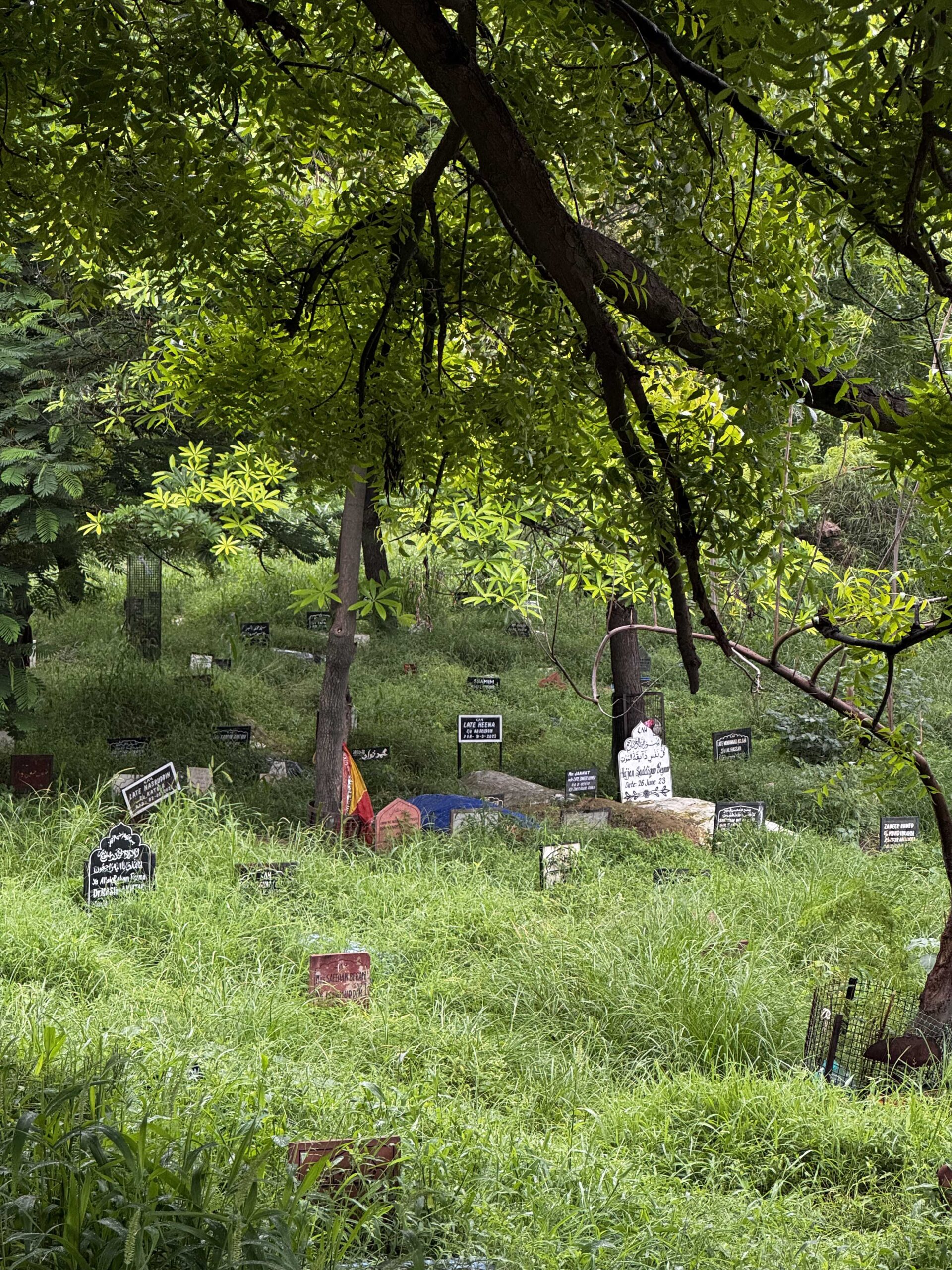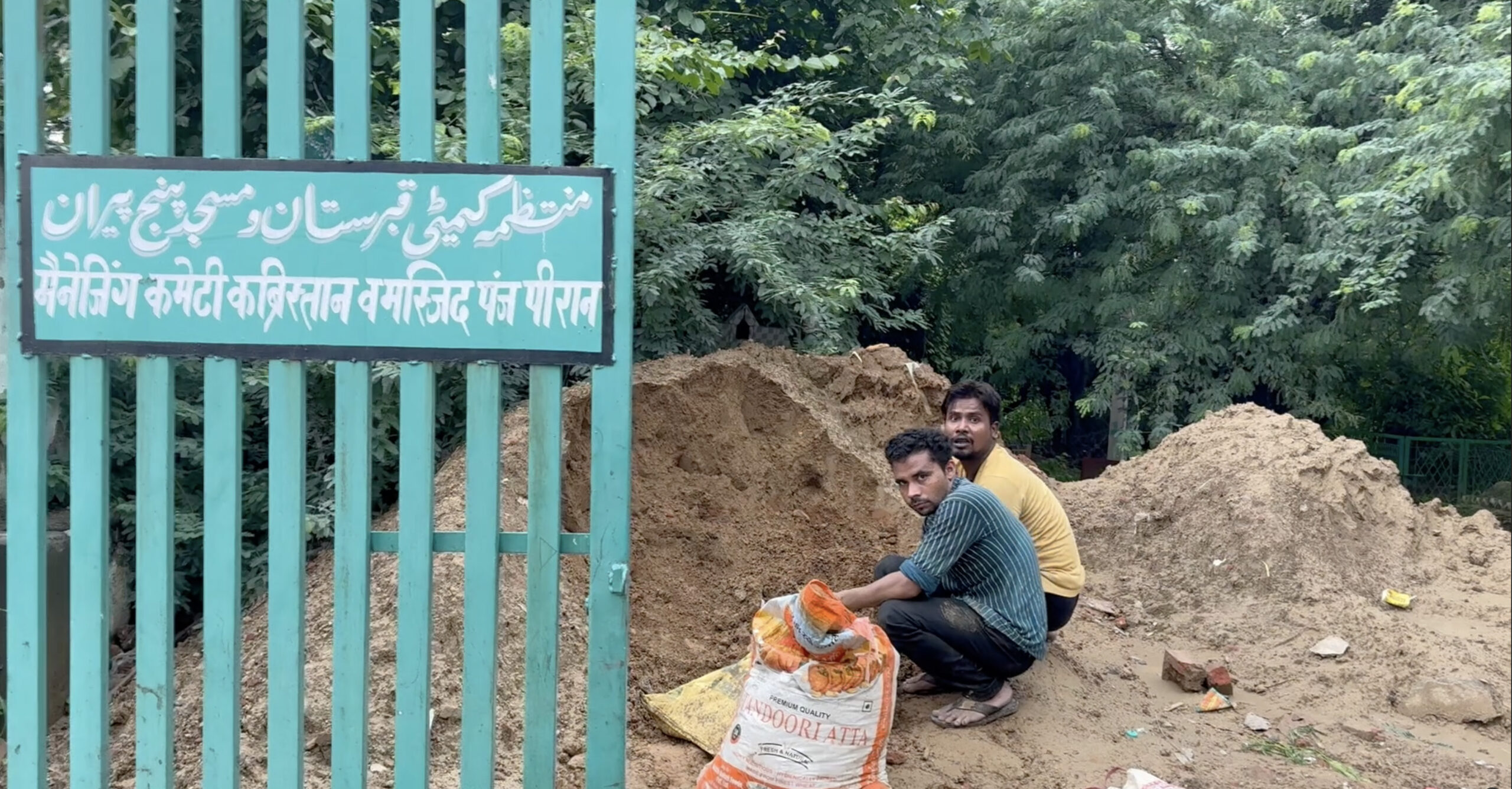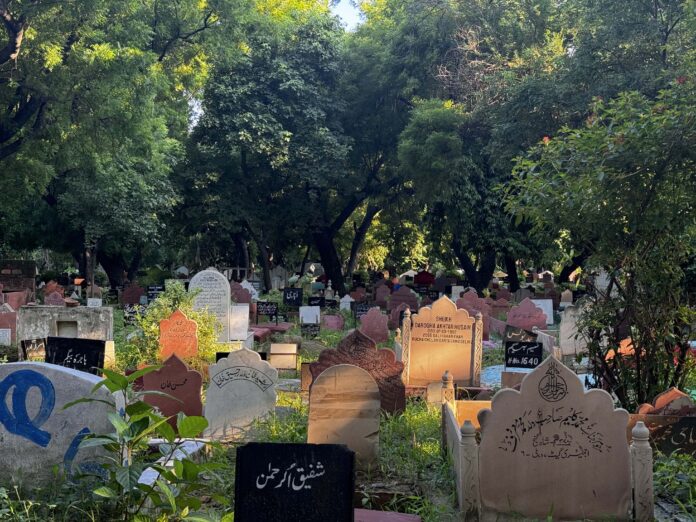Farheen Saifi, TwoCircles.net
“Kitna hai bad-naseeb ‘Zafar’ dafn ke liye,
Do gaz zameen bhi na mili kuu-e-yaar mein.”
(How unfortunate is Zafar, even in death, he was denied a place to rest in his beloved land)
New Delhi: The couplet written by last Mughal emperor Bahadur Shah Zafar over 160 years ago, when he was in exile in Rangoon, still echoes through Delhi. His grief over being denied a resting place in his own land mirrors the pain of a significant of chunk of the Muslim community in the capital today, who struggle to find space to lay their loved ones to rest with dignity.
 ” In the month of November 2024, when my father died, I went from one graveyard to another but could not find space to bury him,” said Abrar Ali, a resident of Jama Masjid.
” In the month of November 2024, when my father died, I went from one graveyard to another but could not find space to bury him,” said Abrar Ali, a resident of Jama Masjid.
He eventually reached Jadid Qabristan Ahle Islam, one of the largest Muslim cemeteries in the city, near Delhi Gate at ITO. But he was allegedly told that land was already exhausted.
For families like Abrar’s, death, the final stage of life meant to be marked with dignity, turns into a desperate search for two yards of land. Urbanisation, encroachment and neglect have steadily reduced the resting places of generations past.
Graveyards Disappearing from Delhi’s Map
A study by Delhi-based Human Development Society shows the scale of the problem. Delhi has 131 graveyards that physically exist, but only a fraction are fully operational. Sixteen remain unused because of litigation or poor upkeep. Forty-three have been partially encroached upon by private individuals, communities, companies and even government bodies.
The Delhi Waqf Board lists 624 graveyards on paper. The huge gap between official records and reality shows how many sites have vanished over the years.
Many cemeteries are already full. Thirty-two graveyards report no vacancies. Some caretakers use “landfilling” to bury one body over another in raised soil mounds, a method seen as unsustainable and undignified.
The study also traces the history of Delhi’s burial grounds: 34% are 100-200 years old, 12% are over 200 years old, 18% are 51-100 years old, 20% are 10-50 years old and only 4% are less than 10 years old.
The imbalance reflects a failure to plan new land for Muslim cemeteries in the city’s modern development schemes.
Rising population pressures make overcrowding worse, especially in Muslim-majority areas such as Okhla. Families struggle to secure burial space, while encroachment on Waqf land reduce what little remains.
“We have no space in Batla House graveyard. It is shrinking every day. Residents nearby are forced to travel to other areas to bury their loved ones,” said Shakeel, caretaker of the Batla House Muslim cemetery.
“The shortage is particularly severe in densely populated neighbourhoods, especially at graveyards attached to mosques and dargahs. These are the most sought after and also the most encroached,” he added.
Encroachment and Urban Pressure
 Encroachment is a major concern. Many graveyards have lost land to housing colonies, government offices, roads, parks and commercial complexes. Reports have repeatedly shown how plots meant for burial are being consumed by Delhi’s expanding urban footprint.
Encroachment is a major concern. Many graveyards have lost land to housing colonies, government offices, roads, parks and commercial complexes. Reports have repeatedly shown how plots meant for burial are being consumed by Delhi’s expanding urban footprint.
“The remaining space in the existing qabristans (graveyards) is hardly enough for two more years,” warns the Human Development Society, adding that the community faces the possibility of running out of burial grounds entirely without urgent action.
A Broader Religious Context
Community leaders say the crisis is part of a larger pattern of religious neglect. Delhi was historically home to hundreds of mosques, dargahs and cemeteries maintained by rulers and citizens. Since Independence, many of these spaces have been abandoned, sealed or taken over.
“This study is an eye-opener. It shows that a majority of Muslim graveyards registered with the Delhi Waqf Board and other agencies have practically disappeared. Both public and government agencies have occupied or encroached upon them, while new land is not being earmarked in planning schemes,” said Dr. Zafarul-Islam Khan, former chairman of the Delhi Minorities Commission.
The crisis creates a sense of betrayal for families. Burial, a religious obligation and cultural tradition, is increasingly becoming a privilege rather than a right. Elders recall a time when graveyards were sacred commons, serving both the living and the dead. Today, centuries-old resting places are vanishing, leaving communities without spaces to honour their dead.
Calls for Action
Social activists say the government must urgently protect existing graveyards, restore abandoned ones and allocate land in urban development plans. Without this, the sense of marginalisation among Delhi’s Muslims is likely to deepen.
“Initially, mosques were abandoned by the central government and very few remain open in Delhi. Now, graveyards too are shrinking and being taken over. This is a complete violation of the religious beliefs of minorities,” said Ismail, a social activist from Old Delhi.
Captions
People collect soil for a grave at Panj Peera, Nizamuddin, as very little soil is found during digging.
Overcrowded graves highlight the shortage of space at Jadid Qabristan Ahle Islam near Delhi Gate.
Only limited space remains at Batla House graveyard, raising concerns about future burials.

